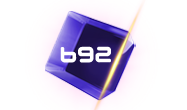Posted on Sun, May. 12, 2002
Wearable computers will enhance the world we see
NEW YORK (AP) - Step outside and look at the world. In Manhattan, you'll see a cityscape of buildings and traffic.
If you're a firefighter, a police sharpshooter or a tourist hankering for Chinese food, you'd want to add information to that streetscape.
Soon you'll have that option -- without opening a map or guidebook.
An emerging technology known as ``augmented reality'' will allow people peering through computer-fueled goggles to overlay virtual images atop those of the real world.
For a firefighter, the computer-aided streetscape might show locations of stored chemicals and sprinkler connections -- vital details in a fire.
For the cop, the goggles could relay aerial surveillance images of a berserk gunman, helping the officer to get a bead on the bad guy.
For the tourist, the glasses might show a virtual arrow and neon message reading ``Joe's Shanghai, turn right, walk three blocks.''
For now, augmented reality -- a clever amalgam of computing, Global Positioning System navigation and a device that tracks a person's head movement -- lives mainly in the cluttered realm of university research labs.
The systems are supposed to first determine the user's exact location and field of vision. Then, depending on the program running on the hard drive, the computer augments the scene with images -- a yellow building label for the firefighter, a blinking red dot for the sharpshooter, a cafe's menu for the tourist.
Researchers at Columbia University are fashioning some of the innovations. There, users can strap on a backpack frame bristling with 25 pounds of antennas, batteries and computing gear and take a tour of the upper Manhattan campus.
Instead of seeing only the university's Greek revival halls and tree-draped plazas, the computer goggles superimpose images of long-demolished Victorian buildings that housed an insane asylum predating the school. Building name tags pop up and disappear when you turn your head to gaze around the campus.
The project, created by Columbia's schools of computer science and journalism, has a more pressing purpose than mere campus orientation.
The lead federal agency funding this is the U.S. Navy's Office of Naval Research, which is spending $2.5 million a year on augmented reality research.
Spurred by the deaths of U.S. soldiers in Somalia in 1993, the Navy wants scientists to develop a belt buckle-sized computer and slim pairs of computer glasses to help the Marines fight better in cities.
The Navy is also developing a version for amphibious landing craft that aims to guide invasion forces through minefields, fog and other hazards.
In Singapore, developers are building an augmented reality system for a military defense of that city-state. And in Britain, researchers want to use it to ``see'' buried pipelines during construction projects.
Other research projects under way across the United States and elsewhere aim to use augmented reality to aid everything from surgery to jet engine repair.
Columbia computer science professor Steven Feiner, who gets about $150,000 per year of the Navy's funding, is developing the visual interfaces seen by wearers of the computer goggles.
The clunky backpack system built by Feiner and his students is cobbled together from a laptop computer and a pair of GPS satellite receivers -- one developed by the Russian military -- along with a head tracking device, a high-speed wireless Internet connection and a tiny video camera.
When the wearer's location tells the computer to augment the scene with an image, it pops up on a pair of Sony goggles with a see-through liquid crystal computer display.
``We are not implying that someone should walk around with something that weighs even half of this,'' Feiner said, giving a tour of his lab, with mannequin heads scattered among computer parts and workstations. ``Being able to look at stuff, and seeing information in context with that stuff, that's what it's all about.''
Augmented reality should be ready for consumer use in a decade or so, Feiner said.
First, U.S. soldiers will be trying it on for size.
One impetus for the Office of Naval Research's Battlefield Augmented Reality System, known as BARS, was the 1993 battle of Mogadishu, where 18 Americans -- and hundreds of Somalis -- died in fierce urban combat.
A three-dimensional cityscape is one of the most treacherous battlefields, laced by tunnels and sewers from below and buildings from above, with clutter and traffic on the street level. Enemy forces can be tough to distinguish from friendly ones. Snipers and mines could be anywhere.
In the Mogadishu battle, U.S. soldiers on a critical rescue mission got lost in the city's sandy alleys because street signs had been taken down.
In future city battles, U.S. soldiers with augmented reality viewers will see labels on buildings and streets and also active details, like areas of sniper fire and locations of friendly forces, said Lawrence Rosenblum, director of virtual reality research and systems at Naval Research Laboratory in Washington, D.C.
``All of a sudden he can be really involved in what's happening, and know what's going on around him,'' Rosenblum said. ``We're taking that information, giving it to him in a way that's never been done before. That's got to make him better.''
------
On the Net:
http://www.ait.nrl.n.../BARS/BARS.html
http://www.cs.columb.../mars/mars.html
...
:smile:

www.philly.com Wearable computers will enhance the wor
Started by
Lepotica Uspavana
, May 13 2002 18:02
1 reply to this topic
#1

Posted 13 May 2002 - 18:02
#2

Posted 13 May 2002 - 23:24
Jel' oni ovo ozbiljno? Pa da znas i da im treba: "In future city battles, U.S. soldiers with augmented reality viewers will see labels on buildings and streets and also active details, like areas of sniper fire and locations of friendly forces..." Nece vise moci da se zale da su mape Beograda sto su kupili na trafikama neazurirane i da gde pise "Slobina palata" je u stvari deciji boravak... &$&%$^&%$!!!




